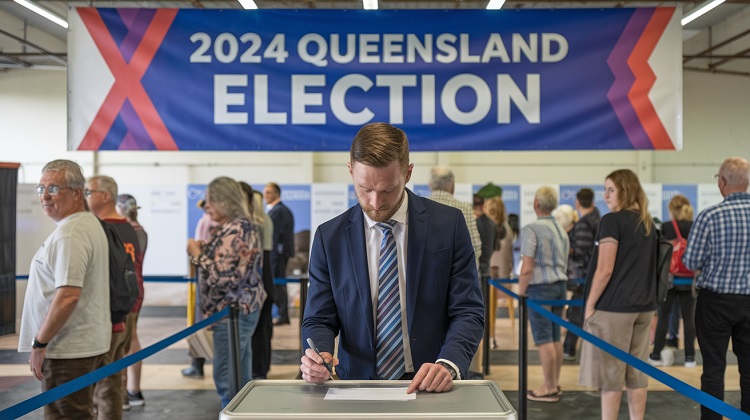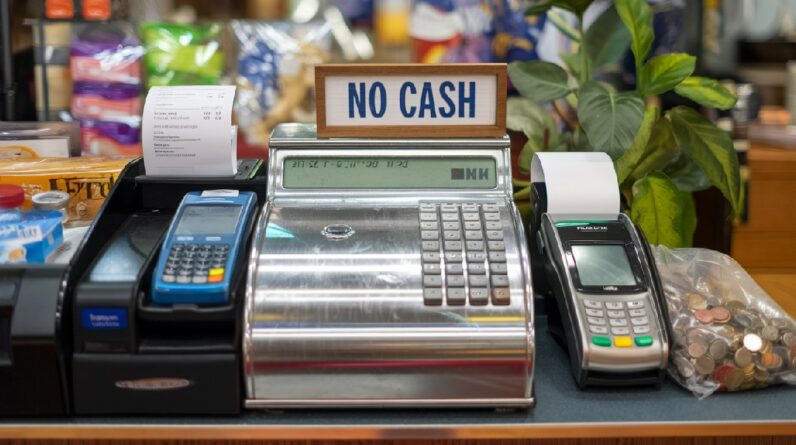A new biorefinery in Sydney’s west is taking waste from old laptops and mobile phones, using it to spin gold.
Sydney Factory Transforms E-Waste Into Precious Gold
The Mint Innovation factory in Sydney, Australia is at the forefront of urban mining, specializing in extracting precious metals from electronic waste. Through a unique recycling process, discarded circuit boards are transformed into gold, copper, and other valuable metals.
This innovative approach not only offers a sustainable alternative to traditional mining but also addresses the pressing issue of depleting natural reserves.
With a quality that reaches up to 99.999%, the recycled metals produced by the factory are utilized in new electronics, medical devices, and jewelry, contributing to a circular economy.
The Mint Innovation Factory: a Leader in Urban Mining
The Mint Innovation Factory’s expertise in urban mining positions it as a global leader in the field, revolutionizing the way electronic waste is recycled and precious metals are extracted. Located in Smithfield, Sydney, the Mint Innovation Factory mines bags of circuit boards from old computers, mobile phones, gaming consoles, and washing machines.
Using a process similar to traditional mining, the factory breaks down the PC boards to the size of sand granules using a double-stage hammer mill. A chemical process and natural biomass are then employed to separate the metals, resulting in gold-laden ash. This innovative approach to recycling is not only a low-carbon alternative to mining but also ensures that no by-product goes to waste.
The Mint Innovation Factory’s commitment to urban mining is instrumental in addressing the issue of natural reserves running out and reducing the environmental impact of electronic waste.
The Recycling Process: From Circuit Boards to Gold-Laden Ash
During the recycling process at the Mint Innovation factory in Sydney, circuit boards are transformed into gold-laden ash through a series of steps. The first step involves breaking down the PC boards into sand-sized granules using a double-stage hammer mill. Next, a combination of chemical processes and natural biomass is used to separate the metals, resulting in gold-laden ash.
This process not only yields precious metals like gold and copper but also serves as a low-carbon alternative to traditional mining. Additionally, no by-products go to waste, making it an environmentally-friendly solution. The recycled metals are then sold to refiners for use in new electronics or other technology and goods, such as medical devices and jewelry. This innovative recycling process helps address the issue of depleting natural reserves and reduces the environmental impact of electronic waste.
Usage of the Recycled Metals: From Electronics to Jewelry
Recycled metals, such as gold and copper, can be utilized in a variety of industries, including electronics and jewelry. The Mint Innovation factory in Sydney, a world leader in urban mining, produces gold and other precious metals from e-waste. These recycled metals are sold to refiners for use in new electronics, as well as in other technology or goods, such as medical devices and jewelry.
In fact, the gold medals for the Tokyo Olympics in 2020 were made from recycled laptops and phones. The quality of the recycled metals can reach up to 99.999%, making them a sustainable and environmentally-friendly alternative to mining. This not only addresses the issue of natural reserves running out but also reduces the environmental impact of landfill disposal and traditional mining practices.
Environmental Impact: the Hidden Gold in Electronic Waste
One of the most significant environmental impacts associated with electronic waste is the hidden gold that is often overlooked. Electronic waste, or e-waste, contains approximately 7% of the world’s gold, with a tonne of electronic waste containing 100 times more gold than a tonne of gold ore. This hidden gold is often lost when e-waste is disposed of in landfills, leading to the leaching of metals into groundwater.
Traditional mining, which is necessary to extract gold from the earth, also causes significant environmental destruction. However, by recycling electronic waste and extracting the precious metals, such as gold, copper, and others, we can address the issue of natural reserves running out and reduce the need for traditional mining.
Recycling Options for Australians: Giving E-Waste a New Lease on Life
With various recycling options available, Australians can actively contribute to the circular economy by giving e-waste a new lease on life. One option is to drop off old laptops and phones at local recycling centers for free. This not only prevents these devices from ending up in landfills but also allows for the recovery of valuable materials such as gold, copper, and other precious metals.
These metals can then be sold to refiners for use in new electronics or other technology and goods, including medical devices and jewelry. By participating in e-waste recycling, Australians can help reduce the environmental impact caused by the extraction of these metals through traditional mining methods, while also conserving natural reserves and addressing the issue of natural resources running out.
The Future of E-Waste: Contributing to the Circular Economy
Furthermore, as electronic waste continues to increase, it is imperative that industries and individuals alike play a role in contributing to the circular economy by finding innovative solutions for the future of e-waste management.
The current linear model of production and disposal is unsustainable and results in harmful environmental impacts. The future of e-waste lies in adopting a circular approach, where products are designed for longevity, repairability, and recyclability.
This involves implementing efficient collection and recycling systems, promoting responsible consumption and disposal practices, and encouraging the reuse and refurbishment of electronic devices.
In addition, technological advancements such as improved recycling processes and the development of eco-friendly materials will contribute to the sustainable management of e-waste.
Frequently Asked Questions
How Does the Mint Innovation Factory in Sydney Compare to Other Urban Mining Facilities Around the World?
The Mint Innovation factory in Sydney is a world leader in urban mining. It implements a process similar to traditional mining and produces gold, copper, and other precious metals from e-waste, providing a low-carbon alternative to mining and addressing the issue of natural reserves running out.
Are There Any Specific Regulations or Guidelines in Place to Ensure the Safe and Environmentally Friendly Recycling Process at the Mint Innovation Factory?
Specific regulations and guidelines are in place at the Mint Innovation factory to ensure a safe and environmentally friendly recycling process. These measures include proper handling and disposal of hazardous materials, adherence to waste management protocols, and compliance with local and international environmental regulations.
What Are the Specific Steps Involved in the Chemical Process Used to Separate Metals From the Circuit Boards at the Mint Innovation Factory?
The chemical process at the Mint Innovation factory involves breaking down PC boards into sand-sized granules, followed by the use of chemicals and natural biomass to separate the metals. This results in gold-laden ash, a low-carbon alternative to traditional mining.
Can You Provide Examples of Specific Medical Devices or Jewelry That Have Been Made Using the Recycled Metals From the Mint Innovation Factory?
Examples of specific medical devices and jewelry made using recycled metals from the Mint Innovation factory include electronic components in pacemakers, dental implants, and surgical instruments, as well as gold jewelry and accessories crafted from recycled gold.
How Does the Recycling Process at the Mint Innovation Factory Contribute to Reducing Greenhouse Gas Emissions Compared to Traditional Mining Methods?
The recycling process at the Mint Innovation factory contributes to reducing greenhouse gas emissions compared to traditional mining methods through its low-carbon approach and utilization of natural biomass.
Conclusion
In conclusion, the Mint Innovation factory in Sydney is leading the way in urban mining by transforming e-waste into precious gold and other valuable metals. Through their innovative recycling process, they not only provide a low-carbon alternative to traditional mining but also ensure that no by-product goes to waste.
This initiative not only addresses the pressing issue of natural reserves running out but also significantly reduces the environmental impact of electronic waste. By giving e-waste a new lease on life, the factory contributes to a sustainable circular economy.
Albion News is a great place to find informative, up-to-date news articles. We provide a wide range of unique articles that offer an interesting perspective on current events from around the world and from various different sources. You can easily search for the topics that matter most to you and explore in-depth pieces that provide insight into the issues and important debates occurring today. Albion News helps you stay informed with carefully researched and credible stories!







